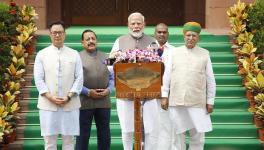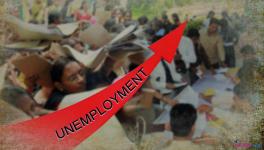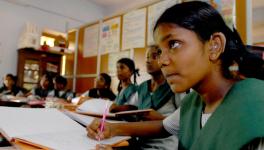Does the Union Budget 2022-23 Offer Inclusive Recovery for School Education?
School closure in India is going to reach its 82nd week. Due to this extended closure, over 247 million students all over the country had their learning disrupted, increasing the pre-existing learning deficits and thus creating a crisis within a crisis. Therefore, as we enter the third year of the pandemic, public provisioning in the delivery of school education needs a roadmap for 2022 in terms of political commitments, policy interventions, and resource allocation.
Union Budget 2022-23 could provide significant impetus to the education sector. Much was expected from the budget around the issues of adequate funding to human infrastructure resources, reducing the digital divide, reintegrating students to school, and implementing the National Education Policy (NEP) 2020. However, the resource allocation for the education sector is not at par to fulfil the expectations.
The nodal Ministry for Education (MoE) has received Rs.1,04,277 crore for 2022-23, 12% higher than the previous year’s budget estimates. Department of School Education and Literacy (DSEL) and Department of Higher Education have witnessed a growth in allocation from 2021-22 (BE) by 16 % and 7%, respectively. Although, the overall share of the education budget in the total Union Budget and the country’s GDP have declined from 2021-22(BE).
SCHOOL EDUCATION: LONG WAY TO GO
We would like to focus on the school education sector, which caters to children of the 3-18 year age group. After a long 82 weeks of school closure, bringing children back to school, making schools safe to return to, training teachers to handle a post-pandemic crisis, or providing children nutritious food are some of the crucial interventions that require special attention from the government. Towards this direction, Samagra Shiksha Abhiyan (SMSA), the key centrally sponsored scheme for school education, has allocated Rs 37,383 crore, increasing Rs 6,333 crores from 2021-22 (BE). However, when we see this figure in terms of additional allocation towards each state (currently, we have 28 states and 8 UTs), it comes out to a paltry Rs. 175 crore.
Moreover, the allocation is still lower than the pre-Covid allocation of Rs 38,750 proposed in February 2020. On the other hand, the budget for Kendriya Vidyalaya and Navodaya Vidyalaya, the model schools of the Union Government, showed higher spending during the pandemic and, as a follow-up, higher allocation this year. However, these schools cater to a tiny section of children.
Another primary concern is implementing the Early Childhood Care & Education (ECCE) programme. While the NEP strongly advocates for foundational literacy and children's health, the budget does not provide adequate allocations for the same. The Saksham Anganwadi and Poshan 2.0 scheme witnessed a meagre increase of 0.79% from the previous year's budget estimates. In September 2021, the Pradhan Mantri Poshan Shakti Nirman (PM POSHAN), a modified version of the existing Mid-Day Meal (MDM) scheme, was launched. The coverage has been extended to children at the pre-primary level in the revamped scheme. However, the allocation for PM Poshan has declined this year. On a positive note, in 2021, the NIPUN Bharat programme was launched under the SMSA with a financial outlay of Rs 2,688 crore for children aged 3-9 years.
DIGITAL DIVIDE: WHAT DO THE NUMBERS SAY?
While the government continues to move towards digitisation by introducing various policy interventions, one cannot oversee the digital divide issue, a growing concern. According to the parliamentary standing committee on education, women, children, youth, and sports, in 2021, in the absence of a device, 77% of students were deprived of online classes during the pandemic. The closure of schools and eventual shift to the virtual platforms has further alienated students from marginalised sections leading to high dropout rates from schools.
Despite the glaring digital divide, the budget speech emphasised online education, digital e-content, and digital teachers as remedial measures to learning loss. While the budget has also proposed providing supplementary education in rural areas by expanding TV channels through the PM e-vidya programme, the budgetary allocation for PM e-Vidya has dropped from Rs 50 crore in 2021-22 (BE) to Rs 0.01 crore for 2022-23 (BE). Moreover, the effectiveness of these interventions remains to be seen as poor digital infrastructure in rural areas continues to pose a problem.
While there is an absence of comprehensive pan-India data to understand the extent of the impact, there is evidence indicating that monetary and non-monetary incentives enable students to remain in the education system. Accordingly, the government must aggressively invest in reintegrating children into educational institutions and supporting them with adequate measures. However, a budgetary cut is observed in scholarship schemes such as the Pre-Matric Scholarship for SC and others and Scholarship for Disabled Students from 2021-22(BE).
The discontinuation of the National Scheme for Incentive to Girls for Secondary Education, the only scheme for adolescent girls from SC/ST communities and girls who pass from Kasturba Gandhi Balika Vidyalayas, is a setback for girls for marginalised communities who want to complete secondary education.
NEP AND THE ROAD AHEAD
Much was expected regarding the financial roadmap for implementing the NEP in this year’s budget. While the Budget speech did not mention NEP, the Budget document introduced schemes like Accelerating State Education Programme to Improve Results (ASPIRE) and Exemplar to fulfil the policy's vision of providing high-quality education and equitable access to government schools. However, substantial parts of these schemes are financed through loans from the World Bank and Asian Development Bank. This silently is opening the door for privatisation in school education.
Overall, although the fiscal support for the education sector this year has witnessed modest growth, the allocations are not adequate to enable and recover from the crisis. Preventive measures to address the digital divide, public expenditure on human resources, infrastructure and, continued monetary and non-monetary support for the students is the need of the hour.
Protiva and Revati work with the Centre for Budget and Governance Accountability (CBGA), New Delhi. Their views are personal.
Get the latest reports & analysis with people's perspective on Protests, movements & deep analytical videos, discussions of the current affairs in your Telegram app. Subscribe to NewsClick's Telegram channel & get Real-Time updates on stories, as they get published on our website.
























